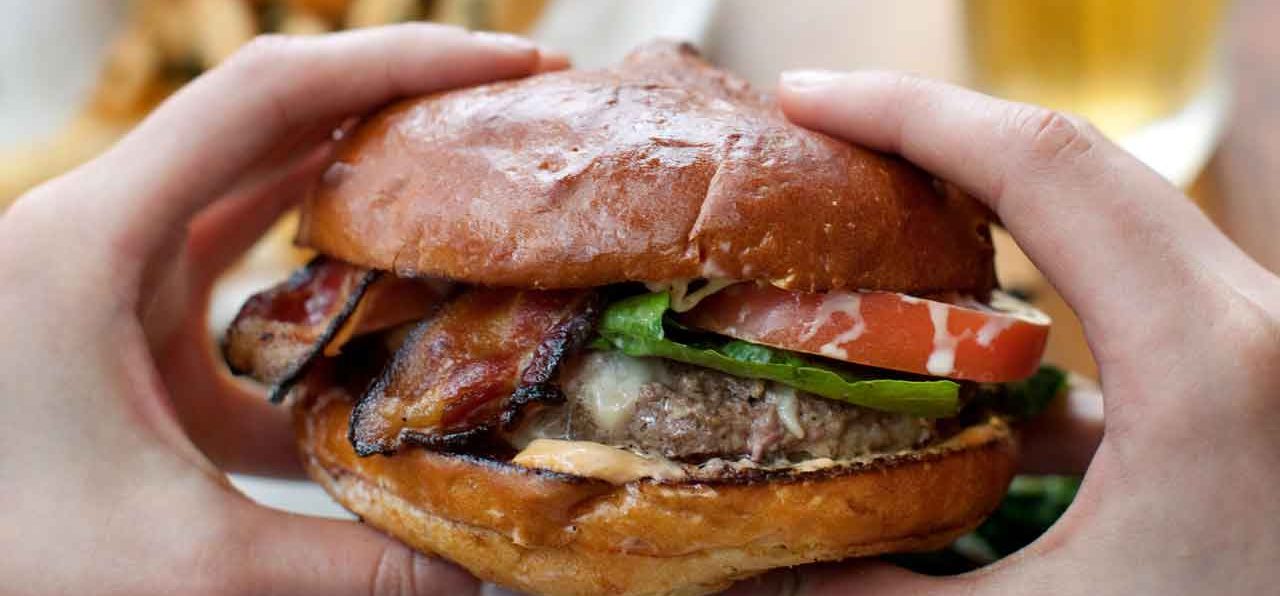How to Stop Overeating

You may be eating more than you need. It’s a major cause of being overweight and even obese. Here’s how to stop overeating and get your weight under control.
If you are an American reading this article, the odds are you may be a little — or a lot — overweight. And you aren’t alone. The Centers for Disease Control and Prevention (CDC) notes that over 70 percent of adults in the U.S. are overweight, and almost 40 percent of those carrying around extra pounds are downright obese.
In fact, the CDC has called America’s weight problem an epidemic. There are many causes, including sedentary lifestyles, diets too high in sweets and refined carbohydrates, lack of exercise, and overeating.
Overeating may seem like the most obvious and easy to recognize cause of excess weight, but it turns out you may not realize you are overeating due to confusion over portion size and other factors. That’s why learning what’s behind overeating — and how to stop overeating — is an important way to take control of your weight.
YOU MIGHT ALSO LIKE: Soda Ages Our Cells (And Is Just Plain Bad for Us)
The portion distortion problem
If you’re an adult who has been eating out on occasion over the past few decades, you may have noticed that portion sizes in many restaurants have become larger in recent times.
This trend toward larger servings has spilled over into things like the size of bagels, vending machine offerings, and bags of supposedly single serving chips and other snacks that would be more appropriate for two or more servings. Research shows you’re more likely to unintentionally consume more calories when faced with these larger portions, according to the CDC.
The result can be overeating (without even noticing it) and excessive calorie intake, especially if you are eating high calorie foods.
The National Heart Lung and Blood Institute (NHLBI) explains the growing portion sizes have changed what Americans consider a “normal” portion of food is — whether at a restaurant or at home. The NHLBI dubs this “portion distortion.”
Portion size: The key to stop overeating
As part of any how to stop overeating strategy, it’s important to understand portion distortion. For example, just because you order a single entrée at a restaurant, it may be enough food for two or even three people (so consider eating only part of a too large meal and taking the rest home for the next day).
To see how today’s inflated portions compare to portions considered normal in size 20 years ago, see how well you do on the NHLB’s online Portion Distortion Quiz. You’ll also find facts to encourage you to consciously avoid overeating excessively large portions of food.
For example, consider that a normal portion of spaghetti and meatballs 20 years ago added up to 500 calories. Today, a typical portion of the same dish today usually totals 1,025 calories. If you vigorously do housecleaning for two hours and 35 minutes, the NHLBI points out, you’ll only burn up about half of the calories you’ve consumed by overeating a too large spaghetti portion.
Read labels to stop overeating
If you’re serious about learning how to stop overeating, understanding the difference between a portion and a serving of food is important. A portion is the amount of food you choose to eat for a meal or snack — it can be small, normal, or large. On the other hand, a serving is a measured amount of food or drink that is considered normal for one person. For example, one serving is a single slice of bread or one cup of milk (eight ounces).
The NHLBI warns that many foods labeled as single portion contain multiple servings. That’s why learning to read labels is crucial to avoid accidentally overeating.
The Nutrition Facts labels on packaged foods, bags of snacks, and cans and bottles of drinks provide the number of servings in the containers. So, the label of a 20-ounce soda, which you may assume is just one serving, actually has 2.5 servings in it. And a three-ounce bag of chips may seem like one serving, too, but the label notes it is three servings.
To quickly check what size servings for fresh and prepared foods are normal for one person and not super-sized, print out a free serving size card from the NHLBI that lists healthy serving sizes for cereal and bread, fruit, dairy products, and meat.
How to stop overeating with lifestyle changes
There are definitely pitfalls in everyday life that contribute to overeating. The CDC offers these tips to overcome temptation, avoid excessive snacking, and stop overeating:
- If you are hungry between meals, have a healthy snack, like an apple. Waiting until you are ravenous at dinner or lunch can trigger overeating.
- To avoid overeating at home, serve meals on individual plates instead of putting bowls and platters of food on the table, a practice that can encourage overeating.
- Beware of mindless munching in front of the TV. Practice portion control with snacks by putting the amount of a snack, such as popcorn or pretzels, in a bowl instead of eating straight from a package. Remember, it’s easy to overeat if your attention is focused on something like a movie or TV show.
- Get rid of the candy dish. Replace it with a bowl of fruit.
- Store healthy foods at eye level and move the tempting foods, like cookies, chips, or ice cream, out of immediate eyesight (put them on a high shelf or at the back of the freezer).
Updated:
April 09, 2020
Reviewed By:
Janet O’Dell